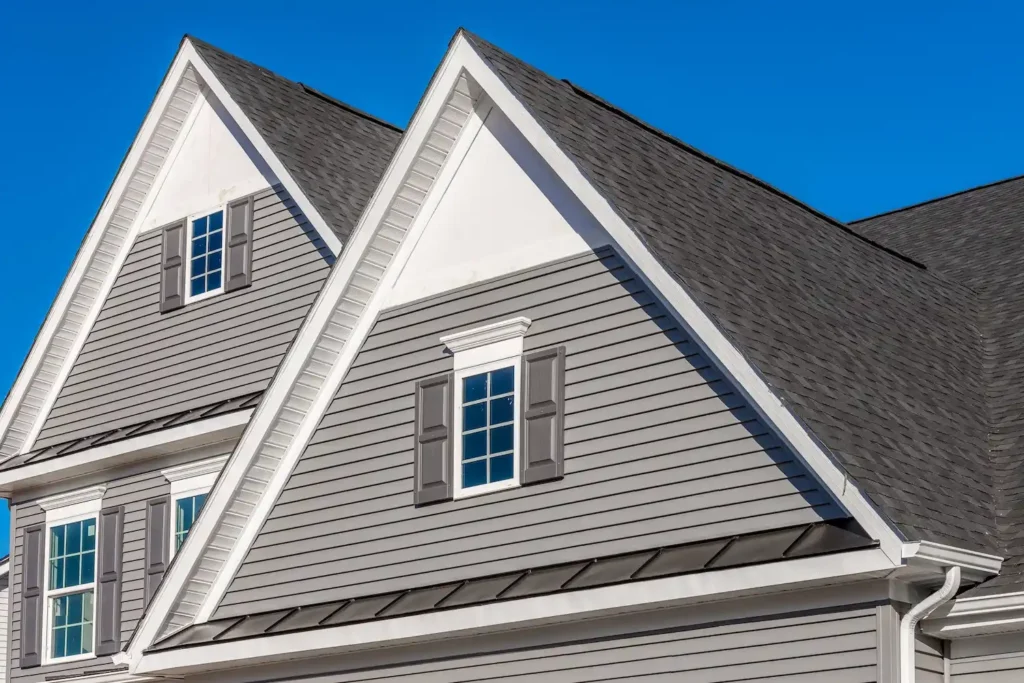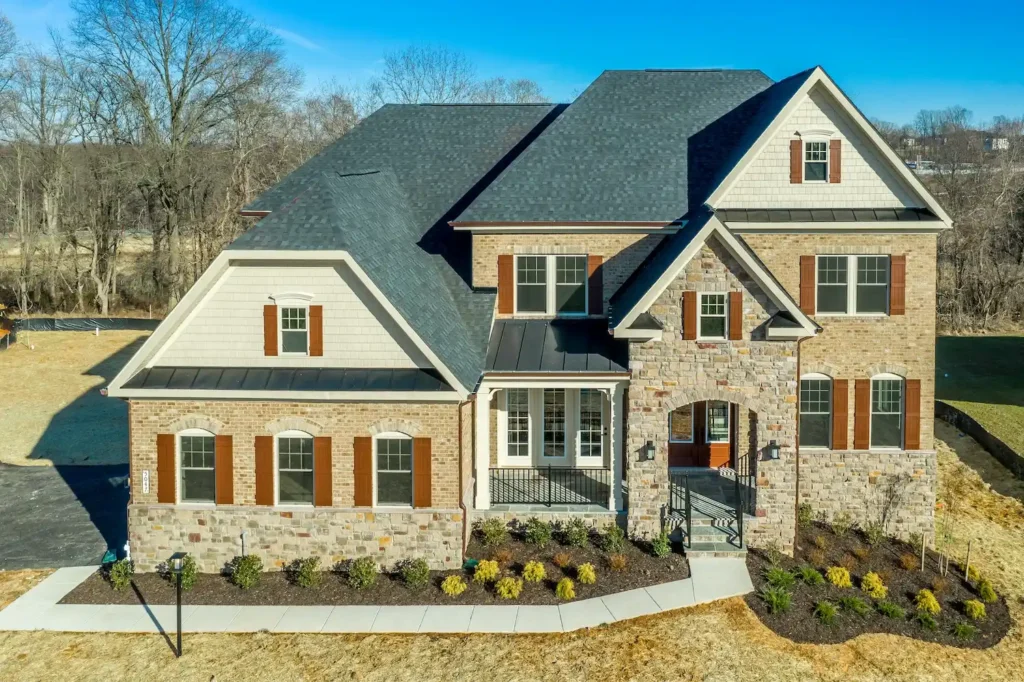While the use of gable roofs in architecture dates as far back as ancient Greece, this roof style was most popular in the United States in the 19th and early 20th centuries. Just because it’s not as ubiquitous as it once was, however, it doesn’t mean that this roof style doesn’t still have its merits.
Let’s break down the qualities of a gabled roof, examples of gabled roof styles, and why a gable roof might be the right choice for your home.
GABLE ROOF CHARACTERISTICS
All gabled roofs have a few characteristics in common:
- Two or more (often steeply-pitched) roof sides
- One or more ridges, which are formed where the tops of two roof sides meet
- Two or more gables, or the sections of wall or siding that run perpendicular to the roof sides
Nearly any roofing material can be used to build a gable roof, including concrete tile, asphalt shingles, and cedar shakes. The gables are usually made of the same material as the siding on the rest of the house. A gable roof may or may not have dormer windows as well.
TYPES OF GABLE ROOFS
Different kinds of gable roofs are distinguishable by the location of their gables, the number of ridges they have, and the pitch of the roof.
FRONT, SIDE, AND CROSS GABLE

Sometimes called open gable roofs, both front and side gable roofs have the typical sloping sides and open gables that you expect from a gable roof. For a front gable roof, the gables are located on the front and back sides of the house. A side gable roof, as the name suggests, has gables on the sides of the home.
A cross-gable roof is a blend between both front and side gable roofs. This roof design is somewhat complex and results in a roof with multiple ridges, several pitched sides, and four gables in total.
BOX GABLE

A box gable roof looks like most standard gable roofs, except that the triangular sections of the gables are boxed in. This makes them a more prominent part of the architectural design than on a standard gable roof.
GAMBREL

A gambrel roof is a type of gable roof design made of two parts: the lower halves of the roof sides have steep pitches, and the upper halves of the roof have more shallow pitches. If you picture the shape of a typical barn roof, you’ll have a sense of the shape of a gambrel roof. This roof style is great for adding additional storage space inside the building or for creating enough ceiling space for a loft.
✅ GABLE ROOF ADVANTAGES
- Because of their simple design, gable roofs tend to be one of the most cost-effective roof styles out there.
- The steep pitch of these roofs also allows snow and ice to slide off the sides easily. This makes them ideal for cold-weather climates and climates that experience high levels of rainfall.
- Because two sides of the roof are not pitched, you also get a lot more attic space with a gable roof than you do with a hip roof. You can even supplement your existing attic ventilation by adding gable vents to get rid of extra moisture in your home and increase the air quality inside.
❌ GABLE ROOF DISADVANTAGES
- Gable roofs do not hold up well to high winds, so if you live in a windy climate or in an area that has a good chance of experiencing high-speed windstorms, this may not be the best roof choice for you.
- Although the base cost of a gable roof is relatively inexpensive, if you’re planning on building a complex gable roof design (think cross gable or gambrel), you may run into increased costs. This is especially true if the interior walls need to have support added to them or if your walls need to be built to different heights to accommodate the complex design.
START YOUR NEW ROOF PROJECT TODAY
With our cold and snowy winters, a gable roof is an ideal choice for any home in Maryland. The attractive and practical design is sure to make your home the talk of the neighborhood.
Interested in getting your gable roof repaired or installed? Look no further! Get in touch with one of our experts today.



![What Is A Gable Roof? [Picture Guide]](https://mars-roofing.com/wp-content/uploads/2022/11/gable-roof-brick-768x512.jpegw3_.webp)